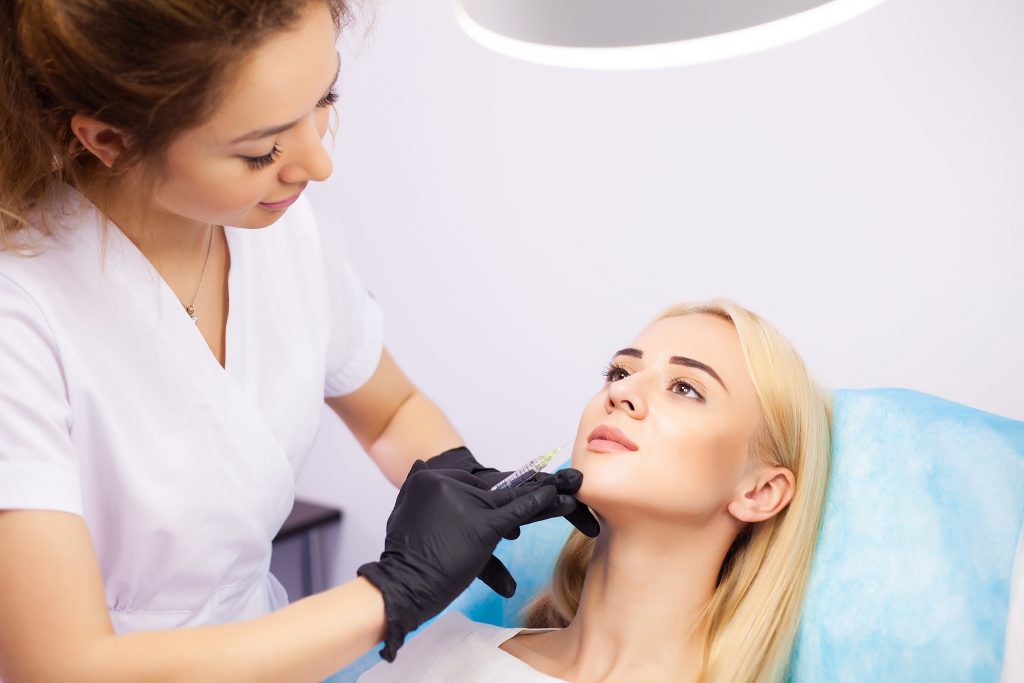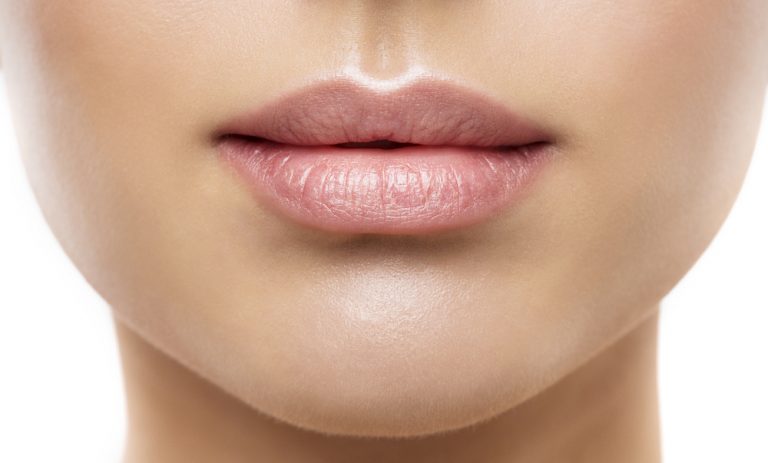Lip fillers still seem to be big news. Have lip trends changed over recent years? If so, how and what has driven the changes?
Lip trends have changed a lot in the last decade and now, more people are having their lips filled and it is no longer taboo to chat about them. The focus used to be solely and incorrectly directed at the upper lip without regard to the position and balance of the lower lip. The treatment of the upper lip as a single entity led to the infamous ‘duck lip’ or ‘trout pout’ appearance, which has become so undesirable to most patients especially the ones that I see and treat. There has been a welcomed shift from treating the upper lip only to creating a balanced more natural appearance with consideration now given to the lower lip and the lower face surrounding the mouth. I will often fill areas around the mouth such as the naso-labial and marionette lines along with the lips to achieve a more balanced look. Clients now want a more “refreshed, youthful” look and this is certainly in keeping with our philosophy in Rewind Skin & Laser Centre.
The ‘normal’ ratio for a balanced lip is 1:2 (40% upper and 60% lower lip volume) not the 2:1 ratio often seen with the ‘duck lip’. Treatment trends are now focused on the 1:2 balance i.e. lower lip slightly bigger than upper lip and 1:1 ratio i.e. even balance between upper and lower lips.
Clinicians should be aware of and use the anatomical norms of perceived beauty such as Phi or golden ratio (believed to be the template for human beauty) to enhance and improve lip dimensions. This takes advanced training, experience and an artistic eye to achieve, along with the science of advanced fillers.
What is integral in achieving a natural lip enhancement? As a Doctor, what do you take into account?
A deep understanding and respect for anatomy, symmetry and facial balance is critical in achieving a natural lip. We, as humans are 3D structures so we cannot look at the patient from just one view.
We also need to visualise the deep structures of the face to understand where exactly to inject to achieve the desired result; this understanding as a doctor comes from years of training and experience performing and assisting in facial and plastic surgery, training with plastic surgeons and investing in the highest quality education possible. Observing the patient from an oblique angle and side profile gives the clinician a better idea of which lip needs to be projected in order to create harmony and balance between the nose and chin. The use of appropriate amounts and type of filler is also of paramount importance in achieving a naturally appealing lip.
The practitioner needs to understand the differences between the youthful and aged lip. These lips need to be treated very differently to achieve natural results. Trying to create the lips of a 25 year old on a 65 year old patient is not going to look natural, therefore, the thoughtful and diligent clinician will ensure that the lips are ‘age appropriate’. Younger patients with full lips usually require definition whereas older patients with thinner lips often require volumisation and definition.
The delicate and revered features of a beautiful lip must also be respected. The ‘cupids bow’ must be well defined and the lobes which give the lips their volume must be targeted specifically. Too much filler in the vermillion border area (lip line) obliterates the shape of the ‘cupids bow’ leading to a ‘sausage’ like lip devoid of any natural anatomical features. Filler placed too deep in the lip can lead to the skin above the lip looking over inflated.
When achieving a natural lip, these things are key:
- Correct consultation, assessment and selection of the patient
- Thorough understanding and respect for anatomy and anatomical balance
- Knowledge of the ageing process and its effect on the lips
- Appropriate choice of filler and correct amount for desired outcome
- Application of the appropriate technique required to achieve the end goal

How have advancements in fillers affected the results achievable?
The evolution of Hyaluronic Acid based fillers over the last few years has been amazing and the good companies have injected millions into research and development. Traditionally, the aesthetic practitioner has used static based products in areas of high facial movement. These mismatches led to areas of lumps, bumps and nodules if placed incorrectly. We are now in an era of using dynamic fillers for dynamic areas. The lips are highly dynamic and therefore should be treated with a filler with dynamic capabilities.
I use only a premium brand filler from a company called Allergan which bends, stretches and flexes when the lips are mobile. This gives the lips a more natural appearance when they are active. The sophisticated technology and crosslinking in newer generation fillers allows for increased longevity, hydration and natural feel of the product. These properties are especially important to use in older lips as cheaper, stiff fillers will look very unnatural.
What should patients be aware of before considering lip fillers?
Patients should ask:
- About the experience and qualifications of clinician
- How long the clinician been practicing in aesthetic medicine
- Are the clinicians fully insured?
- Do they have before and after photographs of their work?
- Can they deal with complications if they occur?
- What filler do they use?
- Will it hurt? Can I have anaesthetic?
- What are the side effects, risks and how likely are they to occur?
The clinician should:
- Discuss desires and expectations of treatment – what is and what is not achievable, and the limitations of treatment.
- Inform on the nature of filler and product used – usually a brand of hyaluronic acid filler
- Talk about the amount of filler requested and required to reach treatment goal
- Discuss longevity of filler – typically 12-18 months for premium fillers
- Possible side effects – bruising, swelling, redness, infection, cold sore reactivation etc
- Social downtime – do I need time off work? Will I be swollen or bruised for an important function?
- Costs
- Anaesthesia choice – none, ice, topical cream, local anaesthetic block

What you expect during and after treatment?
During your filler appointment, the following steps are what to expect:
- Pre-treatment photographs
- Consent forms stating that you understand the risks and benefits
- Application or delivery of anaesthesia ( topical cream or dental injection)
- Cleansing of peri-oral area with skin disinfectant
- Injection of upper lip with chosen dermal filler
- Injection of lower lip with chosen dermal filler
- Gentle massage of lips
- Application of post procedural cream eg arnica
- Written and verbal post-operative instructions
- Assessment of the final result with you in a mirror
- Post- treatment photographs
- Follow up for everyone at 2 weeks.
It is wise to be aware that directly after fillers you can’t apply make-up or lip products for 24 hours. For 48 hours post-treatment, you should not use sun beds or saunas, drink alcohol or exercise.
It’s normal for swelling to occur which will usually settle after 2-4 days. Use cold packs, ibuprofen and antihistamines to manage swelling if required.
You should be provided with a designated contact number should you experience excessive swelling, bruising, pain or discolouration.
What trends can we expect to see rising to the forefront?
There’s been mention of better balance in lip ratio, focus on lip condition/hydration, rather than just volume etc.



